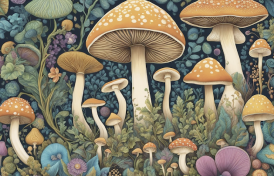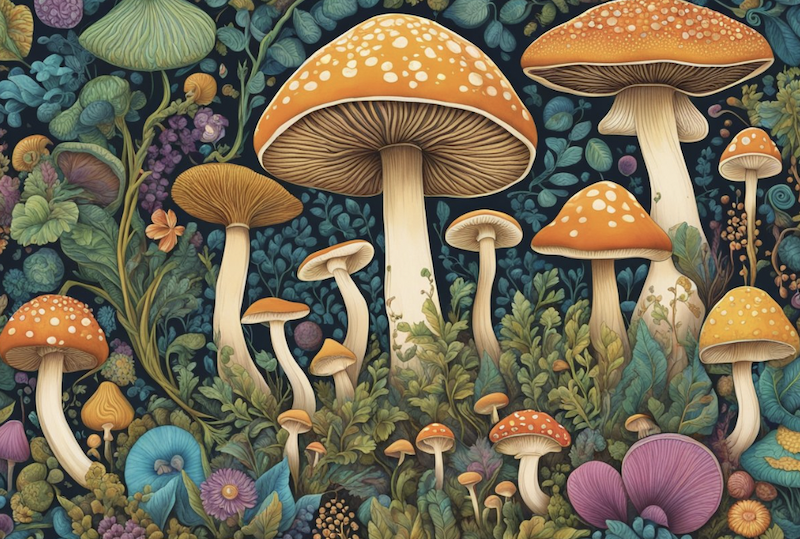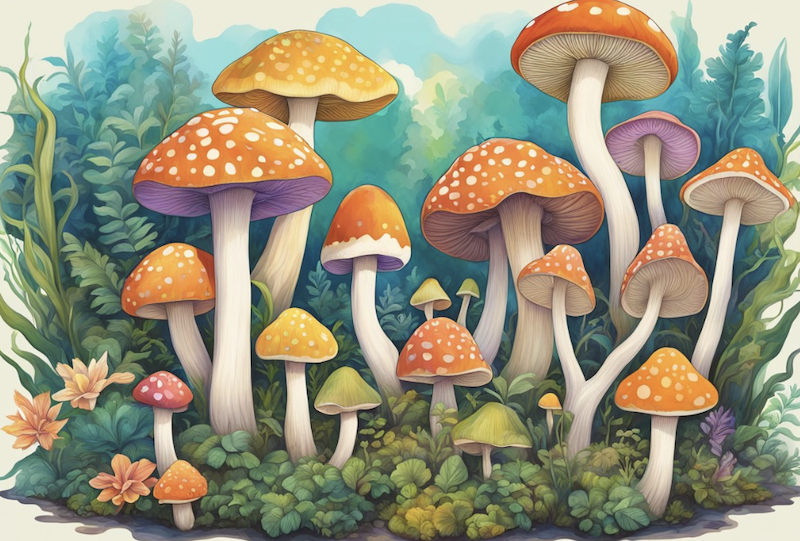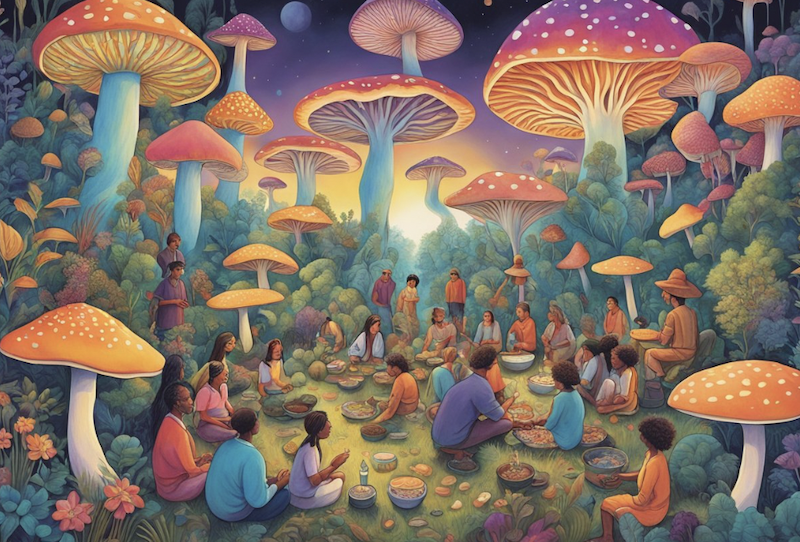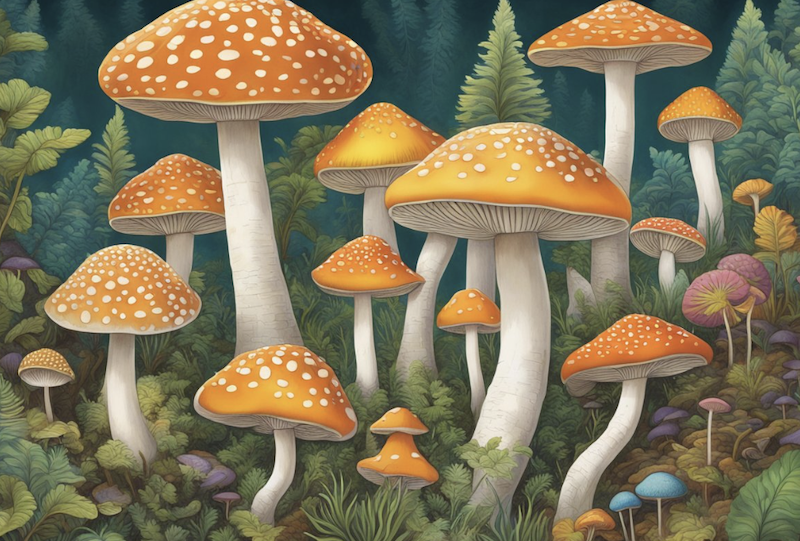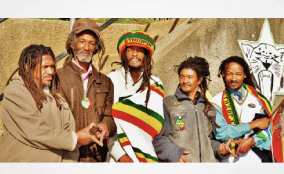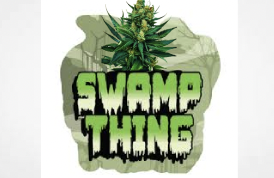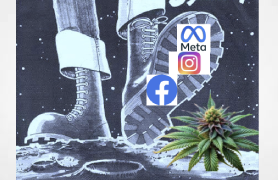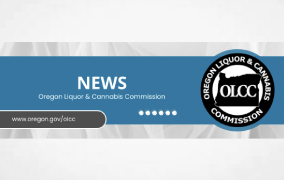Psychedelic mushrooms, often simply called ‘shrooms’, carry a rich tapestry of history interwoven with the spiritual and cultural practices of ancient civilizations. They have been documented across various cultures as a means to transcend ordinary reality and communicate with the divine. For centuries, these naturally occurring fungi have been revered and utilized in religious rituals, offering access to profound mystical experiences. Aztec civilization referred to them as ‘teonanácatl’, or ‘flesh of the gods’, capturing their sacred nature. Additionally, art and iconography from different regions of the world hint at the significance of mushrooms, often depicted in a manner suggesting their use in ritualistic settings.
The shrooms’ journey through time captures a fascinating narrative of human culture embracing natural psychedelics in search of enlightenment and connection. In Central and South America, tribes such as the Nahua, Mazatec, Mixtec, and Zapatec held them in high regard for spiritual purposes. Even in the Old World, the Greeks and Romans may have had their Eleusinian Mysteries, where the ritual drink kykeon potentially contained psychoactive substances. These practices indicate a universal quest for understanding beyond the seen world.
History reveals these ancient practices have persevered into modern times. Through the scrutiny of science and the continued traditions of indigenous peoples, shrooms have influenced contemporary perspectives on medicine and consciousness. Despite the shadows cast over them by legal systems and societal norms, the enduring curiosity about their potential has fueled a renaissance in psychedelic research. Unpacking their past sheds light on the evolving human desire to explore the inner workings of the mind and the nature of reality.
Historical Context of Psychedelic Mushrooms
Psychedelic mushrooms have woven a complex tapestry through human history, deeply entrenched in the spiritual and cultural practices of ancient civilizations. They’ve been both a medium for mystical experiences and a subject of prehistoric art, hinting at their significant role in human development.
Ancient Rituals and Ceremonies
Psychedelics, including psilocybin mushrooms, have been integral to sacred rituals and ceremonies. The Maya and Aztec civilizations are notable for their use of these fungi. Teonanácatl, a term from the Nahua language, meaning “flesh of the gods,” was used by the Aztecs to describe psilocybin mushrooms. These ancient cultures employed mushrooms to facilitate spiritual communications and healing practices. The Mazatec people, indigenous to Oaxaca, Mexico, continue these traditions, using psilocybin mushrooms in their healing and divination rituals.
Psychoactive Mushrooms in Art and Culture
Throughout history, mushrooms harboring psychoactive compounds have made regular appearances in art and cultural symbols. Amanita muscaria, the iconic red and white-spotted mushroom, has been represented in prehistoric rock art, suggesting its significance long before written history. These depictions not only highlight the use of mushrooms in ancient times but also point to their perceived power and importance.
Psilocybin in Prehistoric Times
Traces of the use of psychedelic mushrooms can be seen in prehistoric artifacts, where they’re often linked to spirituality and mystical experiences. While concrete evidence from the prehistoric period is scarce, the persistent presence of mushroom motifs in ancient artifacts allows scholars to surmise that mushrooms were recognized and utilized by early humans for their mind-altering properties. These practices are believed to have been widespread across ancient cultures, with each civilization incorporating mushrooms into their unique spiritual narratives.
Cultural Significance Across the Globe
Psychedelic mushrooms have woven a tapestry of profound significance in various cultures. While mysterious in nature, these fungi have ceremoniously connected humanity to the spiritual realm throughout history.
Mesoamerican Use of Psychedelics
In the lush landscapes of Central America, particularly Mexico, the Aztecs and Maya civilizations held Psilocybe mexicana in high esteem. These cultures embraced mushrooms, not as mere food but as sacred conduits to commune with spirits. The Aztecs referred to them as “teonanácatl,” meaning “flesh of the gods,” and shamans used them in religious ceremonies to induce mystical experiences.
| Region | Mushroom | Cultural Role |
| Mexico | Psilocybe mexicana | Entheogenic use in ceremonies |
| Central America | Various Psychedelics | Spiritual and divinatory purposes |
The Mazatec people, inhabitants of the Oaxaca region, continue to cherish these practices, using the mushrooms to heal and divine.
Psychedelics in European Traditions
Crossing the great ocean to ancient civilizations in Europe, one encounters the Eleusinian Mysteries of Greece. These enigmatic yearly celebrations shrouded in secrecy likely incorporated the entheogenic substance kykeon, which some researchers speculate contained LSD-like elements from ergot fungi. The importance of the ceremonies spanned centuries and they became a vital rite for many in ancient society, initiating participants into profound philosophical insights.
Europe has seen its own psychedelic fungi revered, notably Amanita muscaria, which has a broader geographical distribution and has been part of the lore in various regions, hinting at applications in pagan traditions.
Indigenous Practices in Other Regions
The Amazonian tribes of South America share their own narrative with psychedelic plants, with Ayahuasca — a powerful brew combining plants that contain DMT with others that inhibit its breakdown. These rituals are designed to cleanse and offer spiritual insight, drawing similarities to mushroom use in terms of reaching altered states of consciousness.
Far from the Amazon, even in the distant lands of India, certain Vedic texts hint at a mystical substance named Soma. While the exact nature of Soma is unknown, some scholars suggest it might have been a psychedelic used in ancient rituals, pointing to a global archaic affinity with mind-altering substances for seeking transcendence and communication with the divine.
Psychedelics in Science and Medicine
Psychedelic mushrooms and other substances have experienced a renaissance in scientific and medical communities, renewing interest in their therapeutic potential and complex pharmacology.
Psychedelic Research Revival
In the last few decades, there has been a significant resurgence in the study of psychedelic substances within the realms of science and medicine. After historical governmental restrictions, researchers are now exploring the effects of substances such as psilocybin, the active compound in psychedelic mushrooms, and LSD (lysergic acid diethylamide) with renewed vigor. Institutions worldwide are conducting controlled experiments to understand psychedelics’ mechanisms and potential benefits.
Therapeutic Potential for Mental Health
Scientific investigations have shown psychedelic substances like psilocybin and peyote to display considerable promise in treating a range of mental health disorders. These include but are not limited to:
- Depression: Clinical trials indicate significant symptom reduction.
- PTSD (Post-Traumatic Stress Disorder): Patients have reported improved wellbeing post-therapy.
- Obsessive-Compulsive Disorder: Case studies reveal potential for managing symptoms.
- Addiction: Promising results in treating tobacco and alcohol dependency.
Treatment typically involves structured therapy sessions coupled with the administration of psychedelics, under the guidance of medical professionals.
Pharmacology of Psychedelics
The active compounds in psychedelic mushrooms, psilocybin and psilocin, primarily interact with serotonin receptors (5-HT) in the brain. This interaction influences the nervous system, altering perception, mood, and cognition. Albert Hofmann, the chemist who first synthesized LSD, had also isolated the active compounds from psilocybe mushrooms, contributing significant understanding of their pharmacological properties. The effects of these substances on the 5-HT system have been a central focus, revealing the complexity of psychoactive substances and their profound effects on human consciousness and emotional states.
Modern Usage and Legal Perspectives
As the world evolves, so does the dialogue surrounding psychedelic mushrooms, often tied to scientific research, cultural shifts, and legal landscapes. This exploration looks into contemporary societal acceptance, international regulations, and the growing wave of decriminalization tied to medical advancements.
Psychedelic Culture in Contemporary Society
Psychedelic mushrooms have maintained a presence in American society, with advocates promoting their use for creativity and mental health. In cities like Denver and states like Oregon, individuals champion the cultural legacy of psilocybe species, commonly known as magic mushrooms, amidst a backdrop of recreational and ritual usage or even Microdose Mushrooms. But beyond recreational use, a substantial push exists for recognizing their medicinal benefits, primarily in mental health sectors struggling with challenges like depression and alcoholism.
International Laws and the Psychedelic Movement
The legal framework for psychedelics on the international stage is largely influenced by the United Nations’ Convention on Psychotropic Substances, which, since 1971, has listed many such substances, including LSD and psilocybin, under strict controls. However, an interesting contrast emerges as some nations begin to re-evaluate their stance. The Canadian government, for instance, has allowed limited use of psychedelics for patients with certain medical conditions, reflecting a new era of global reconsideration of psychedelic plants and their potential benefits to medicine and science.
Decriminalization and Medical Use
Oregon stands out as the first U.S. state to not only decriminalize the personal possession of small amounts of psychedelic mushrooms but also to approve their use for medicinal purposes under regulated treatment. Researchers are diving deep into psilocybin’s potential to treat mental health disorders, hoping to see medicinal benefits akin to those already recognized in substances like cannabis, which has undergone a transformation from taboo to taxed medicinal staple. The momentum for change can also be seen in movements aiming to shift the perception of psychedelics from purely recreational to pivotal therapeutic agents in battles against conditions such as alcoholism and anxiety.
Future Directions and Emerging Trends
As the scientific community continues to unravel the intricate relationship between psychoactive mushrooms and human consciousness, two significant trends herald a new era in psychedelic research: the integration of these substances with cutting-edge technology and the innovative approaches lighting the way forward in psychedelic research.
Integration of Psychedelics and Technology
Technology’s role in psychedelic therapy is becoming increasingly pivotal. Researchers are exploring Virtual Reality (VR) as a tool to enhance the therapeutic setting, creating immersive environments that may facilitate deeper psychological insights during psychedelic experiences. In the realm of data analysis, advanced algorithms and machine learning techniques are being employed to better understand the complex effects of psychedelic substances on the brain. This technological synergy holds promise for more personalized treatments, optimizing the therapeutic potential of psychoactive mushrooms for individual patients within healthcare settings.
Innovative Approaches to Psychedelic Research
Revolutionary methods in psychedelic research are materializing through interdisciplinary collaboration. Teams comprising neuroscientists, psychologists, and tech experts are investigating how psychoactive substances can be used safely and effectively. One such innovation is the exploration of microdose mushrooms—the regular ingestion of very low doses of psychedelics—which is being studied for potential cognitive and emotional benefits. Moreover, scientific teams are actively mapping the neurobiological mechanisms behind mushrooms’ therapeutic effects to bolster their use in treating mental health conditions, advancing both science and industry by bridging the gap between ancient spiritual practices and modern medicine. Companies such as Microdose Mushrooms Canada offer online microdose mushrooms to a Canadian demographic. This is becoming more regular as the widespread adoption of microdosing continues to grow into new markets and become the norm.
